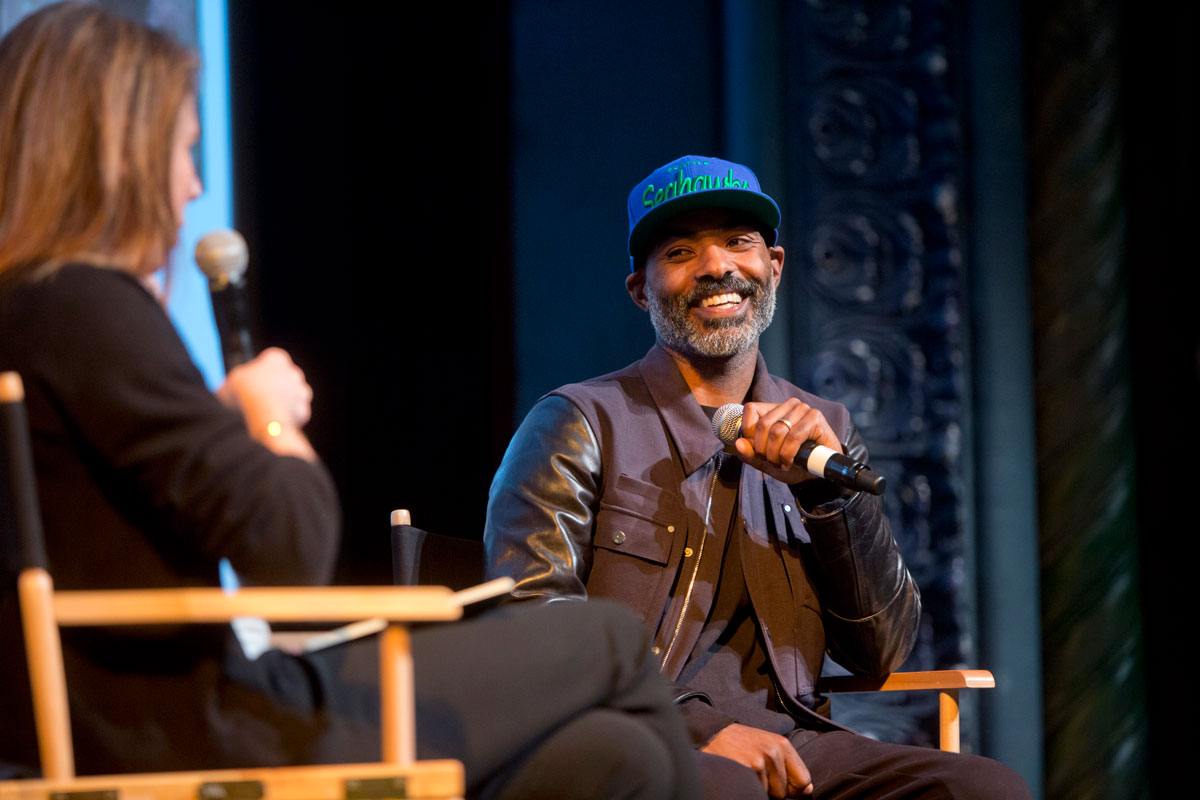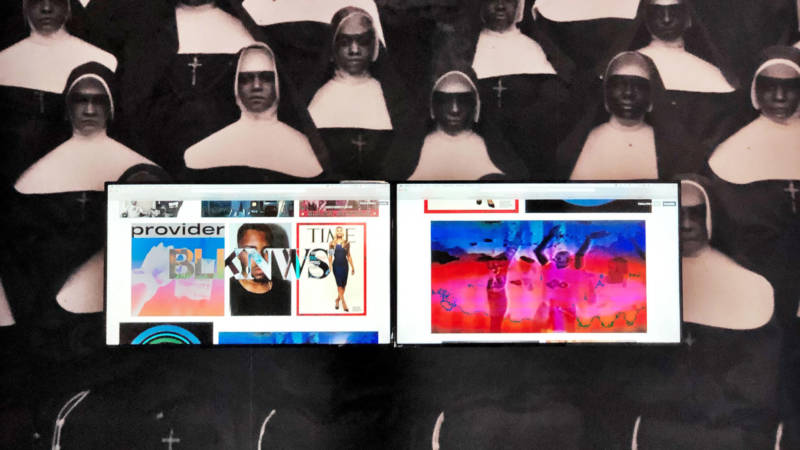Editor’s note: Please welcome a new monthly column from writer, editor and producer Ruth Gebreyesus, who will cover Bay Area arts and culture, with an eye towards the East Bay, for KQED Arts.
There’s no good reason to summarize or itemize Kahlil Joseph’s BLKNWS, a two-channel video installation now on view at Stanford University. Its density resists any such effort.

In fact, there’s great relief in arriving at a show about blackness that isn’t attempting a frugal summary of its subject matter or extolling moral lessons through black bodies. But for the sake of fulfilling my duties as a messenger, here goes: BLKNWS is a broadcast of black life in America expressed through abundant footage pulled from headline news, archival material, internet-native clips and Joseph’s own past films.
At a screening for the San Francisco Film Festival in April, Joseph explained he originally pitched BLKNWS to television networks as a news program. With painter Henry Taylor and actress Amandla Stenberg, among others, as anchors, the broadcast reads more like a social media feed or a journey at the mercy of YouTube’s calculus than any news currently on TV.
On BLKNWS, algorithmic chapters sway between disparate poles. Dystopian climate change headlines play alongside clips from Annihilation and other catastrophe movies. Soon after, June Jordan sits at her desk reciting her poem “Song of the Law Abiding Citizen.”
“And I can’t pay the rent / but I sent 10,000 food stamps / back to the President and his beautiful wife,” she chants in her distinct birdsong, as the footage switches to a scene at the iconic dining table in Spike Lee’s Crooklyn. In this case, the algorithm is Joseph’s own math, a living formula he edits and adds to at will, remotely via a server.

If there’s one through line that connects Joseph’s art and film career thus far, it’s the presence of music. His earliest films found their way to the public through music videos he directed for Shabazz Palaces, Flying Lotus and FKA Twigs. In 2014, he debuted m.A.A.d. at MOCA, a short film set to songs from Kendrick Lamar’s critically acclaimed 2012 album, Good Kid, M.A.A.D City. Opening with Lamar’s family home videos, shot just a month before the 1992 L.A. riots, and continuing with clips of quotidian life Joseph captured after the album’s release, m.A.A.d. paints a portrait of Compton as if it were recollected from communal memory.




